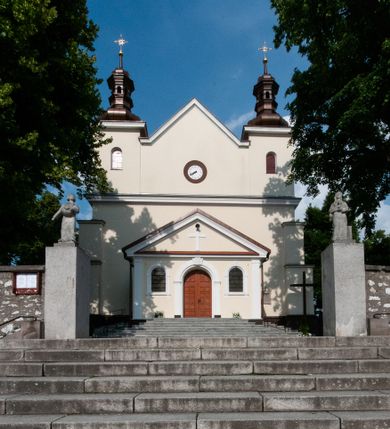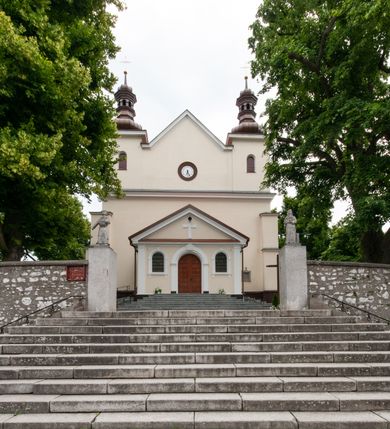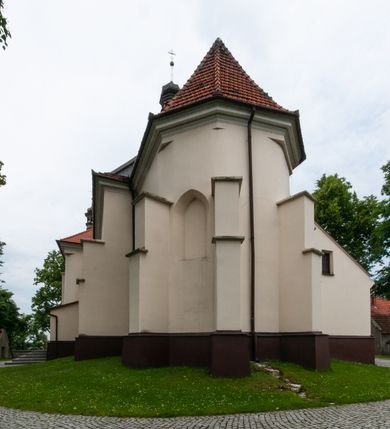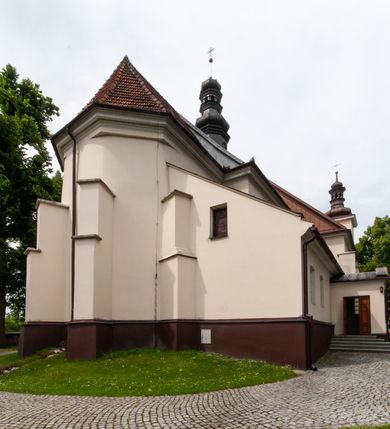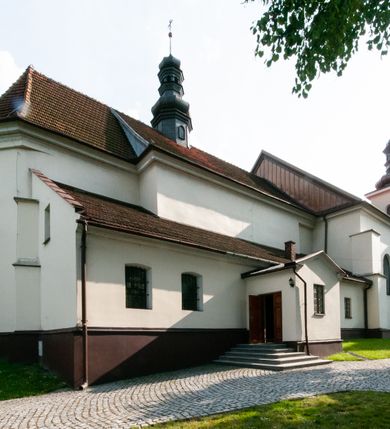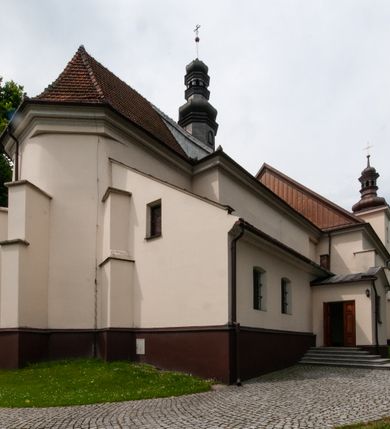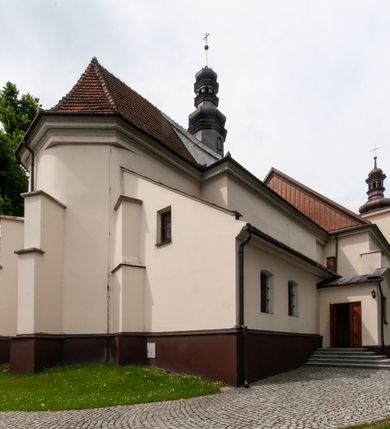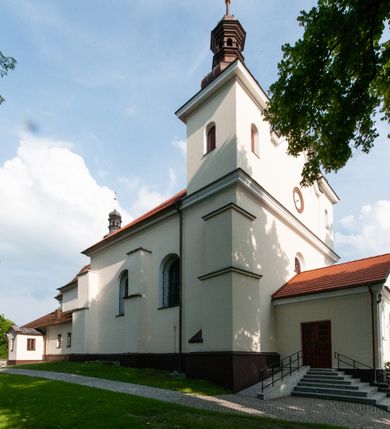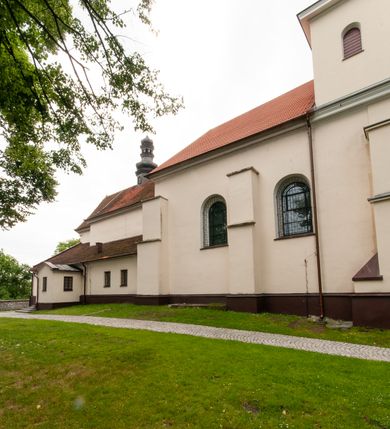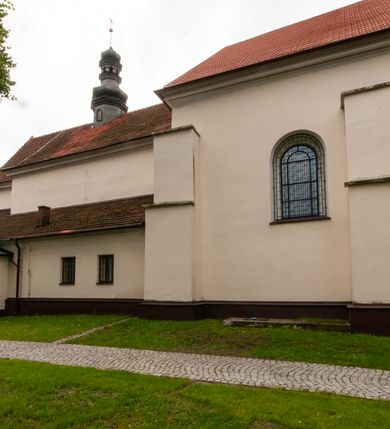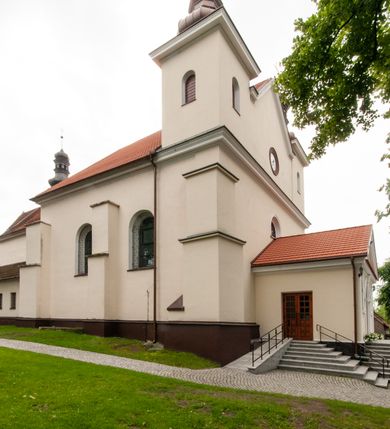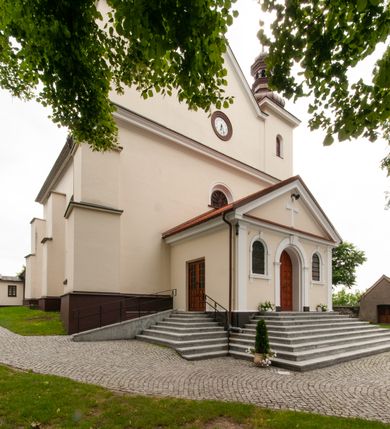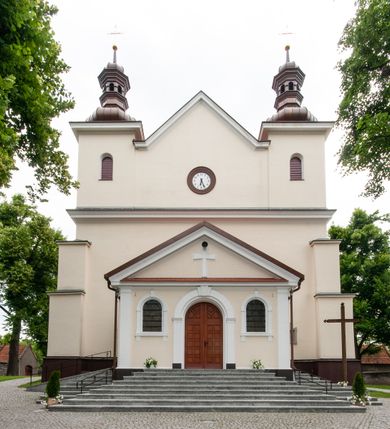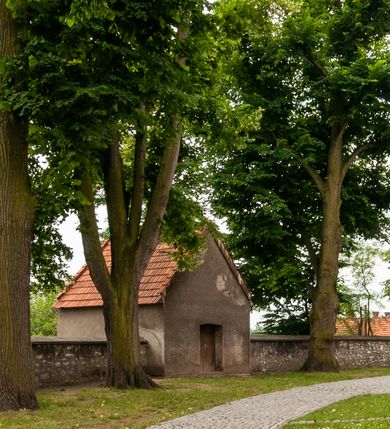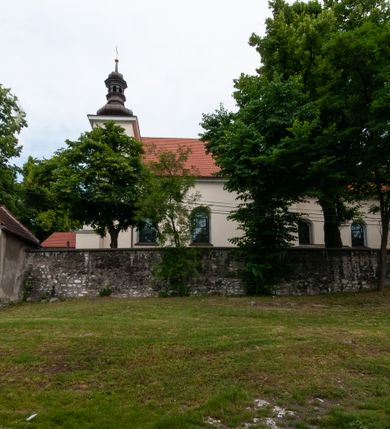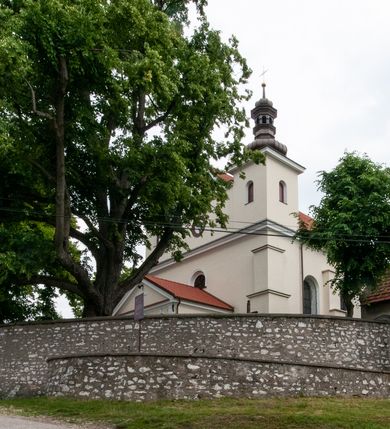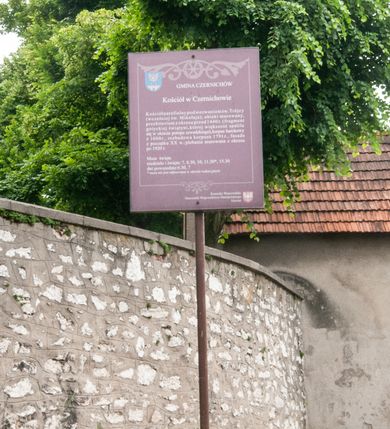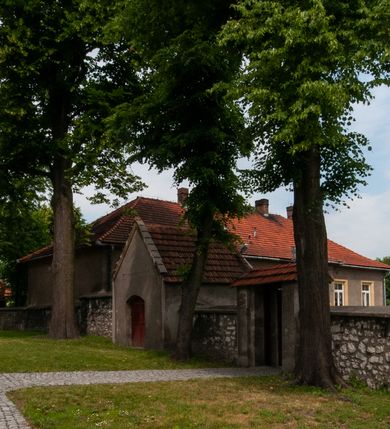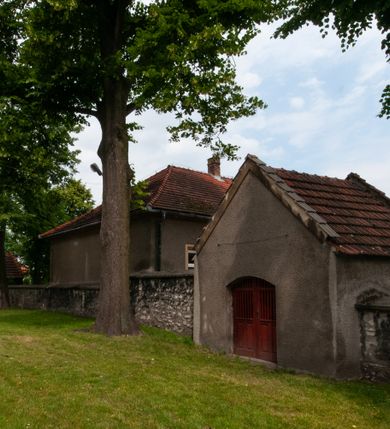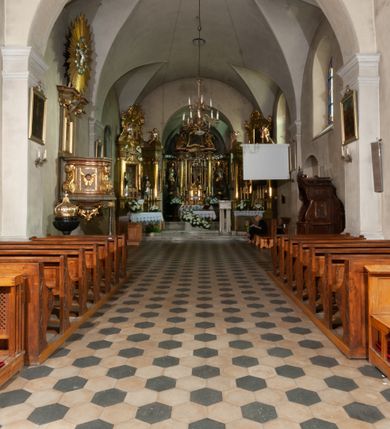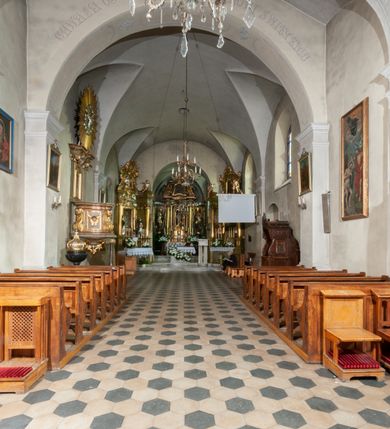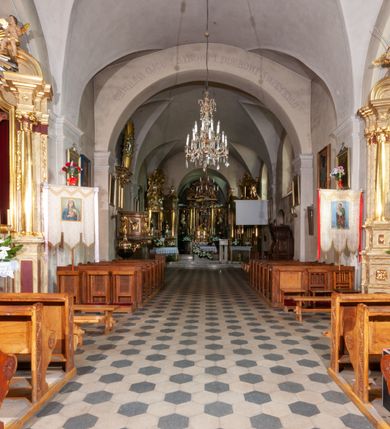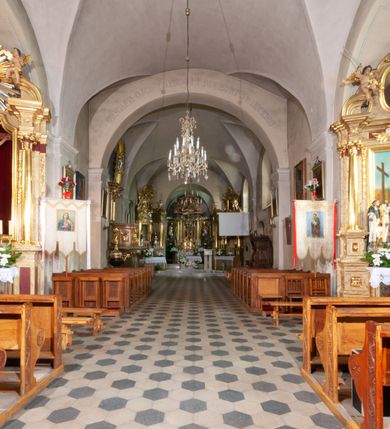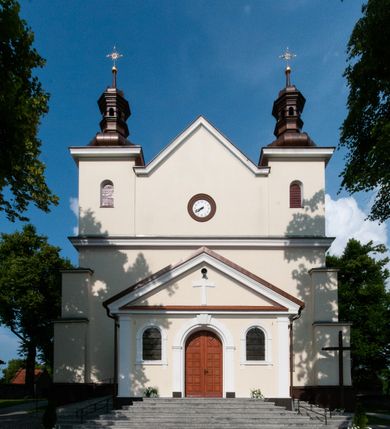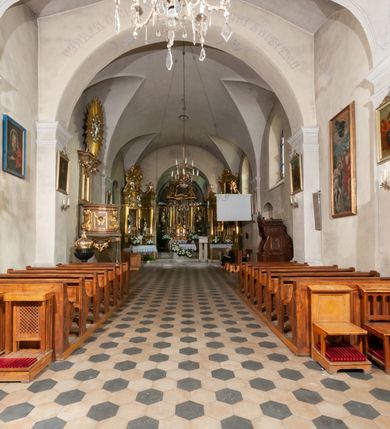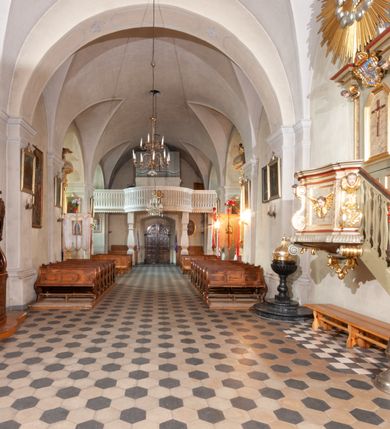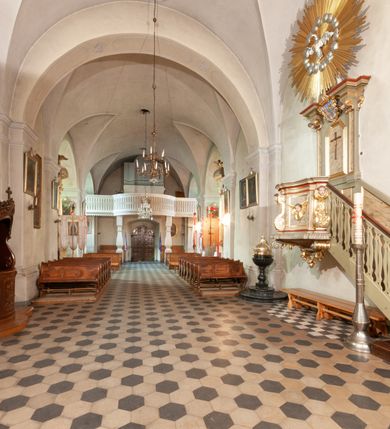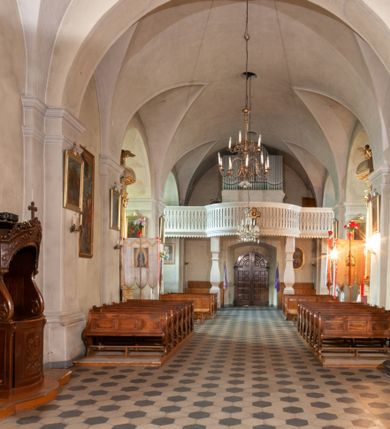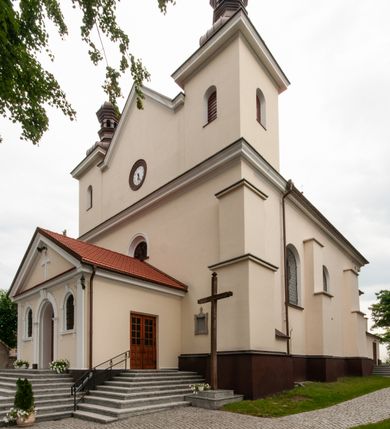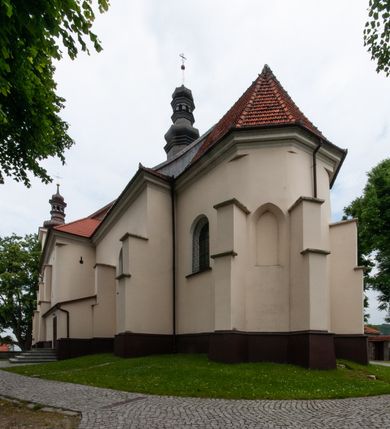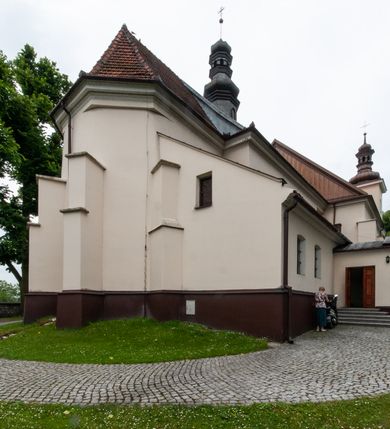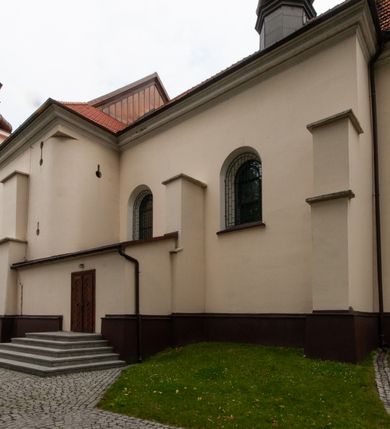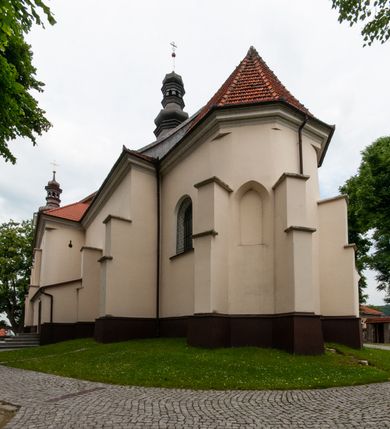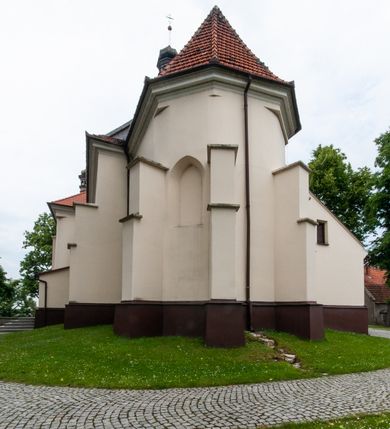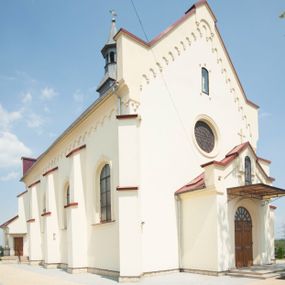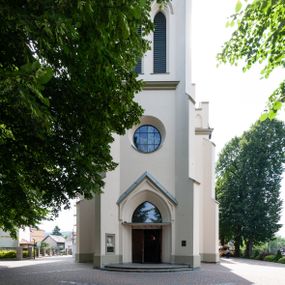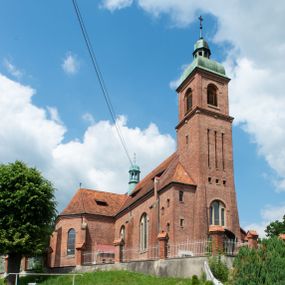
Holy Trinity Church
Identifier
DZIELO/12481
Catalogue note author
Agata Felczyńska
History of work
The parish was mentioned for the first time in the first half of the 14th century, then by Jan Długosz in his notes of 1440. The present chancel created before 1440 is the only part that survived the church fire during the Swedish Deluge (1655). In 1680, the temple was rebuilt and enlarged, and it was consecrated by the Cracovian suffragan bishop, Mikołaj Oborski. The next expansion of the church to the west took place in the years 1788-1791. The western portal has been moved during the renovation so that it can still be used as an entrance. In 1900, a new floor was laid, and in 1901 a vestibule was added and the sacristy was extended to house a treasury (currently it serves as a room and boiler room). In 1930, the church was repainted, altars and paintings were cleaned, the loft, organ, doors, pews, windows and Stations of the Cross were renovated and painted. Also, the stairs leading to the loft was replaced. In 1933, the towers were added and the façade was renovated by extending the stairs. At the end of 1953, a new organ was built and consecrated. In 1962, the polychrome of the church was changed and in 1966 a heating furnace was installed. In 1983, the church was renovated, in 2002-2003 the façade and elevation were painted, external lighting was installed, while in 2010-2011 the roofs and stained glass windows were renovated. The walls were renovated, stairs were reinforced, the boiler room was built and side doors were replaced two years later. In 2016, the floor was renovated and a year later the new organ, conciliar altar and the pulpit were inserted.
Abstract
The Holy Trinity Church is a multi-stage construction. The oldest structure is a small chancel, probably built before 1440. The eastern part of a nave was probably rebuilt around 1680, and the western part dates back to the end of the 18th century. The newest structure are towers added in 1933. Such interior furnishings deserve particular attention: a baptismal font of black marble from the 17th century, the image of St. Isidore in the right side altar (according to the painting style of Michał Stachowicz) and late baroque altars. Both a portal of black marble, leading to the sacristy, and a left side altar of the Crucifixion originate (according to some records) from the All Saints Church in Cracow.
Other works from this place
Similar works
By title
By category
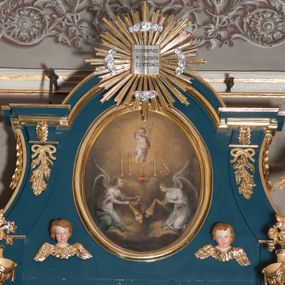
Adoration of the Holy Name of Jesus
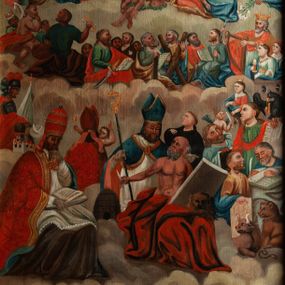
Adoration of the Holy Trinity by the all saints
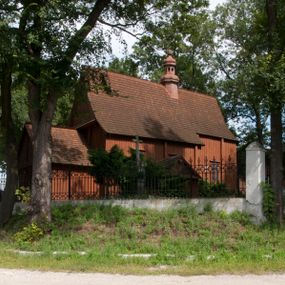
All Saints Church
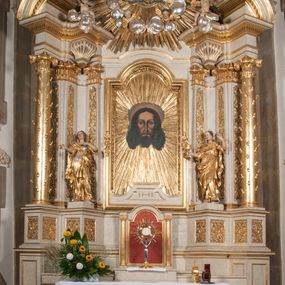
Altar of the Holy Spirit in the side chapel
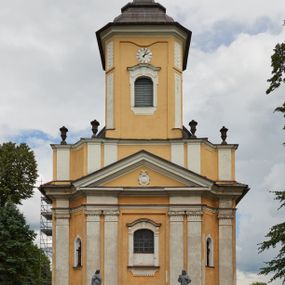
Church complex Church of the Nativity of the Blessed Virgin Mary (church, chapel, church cemetery, fence with chapels with stations of the cross [14], chapel with a Christ Crucified statue, chapel of Our Lady of the Rosary).
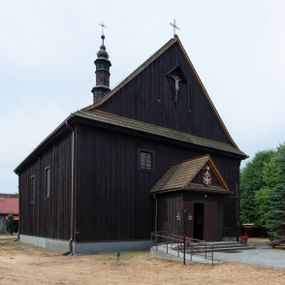
Church of Madonna of Częstochowa
How to cite?
Agata Felczyńska, "Holy Trinity Church", [in:] "The Sacred Lesser Poland Heritage", 2026, source: https://sdm.upjp2.edu.pl/en/works/holy-trinity-church-2
